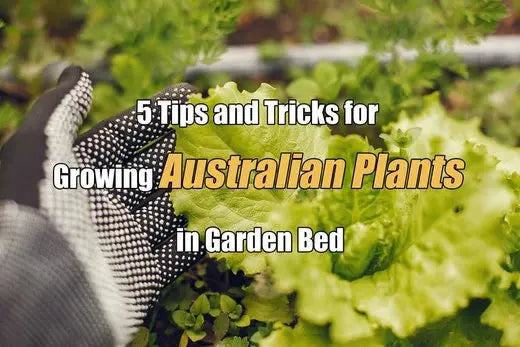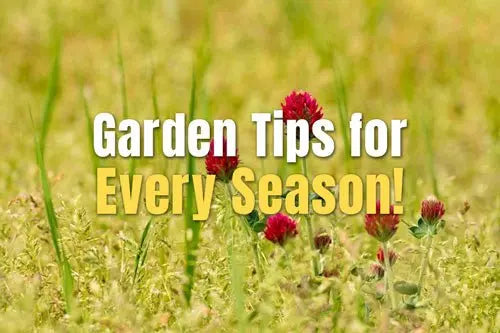The Best Plants to Grow in December for Raised Vegetable Beds
By Chuks Wesley
Author bio: Chuks Wesley is a seasoned gardening expert and Saas B2B content writer. With a deep-rooted passion for gardening, landscapes, and lawn care, Wesley has cultivated a wealth of knowledge in gardening. His experience and expertise extend beyond the garden bed, as he seamlessly crafts insightful content tailored to the software-as-a-service (SaaS) B2B industry. His go-to fun mode is watching NBA games with coffee in hand.
As the year draws to a close and winter settles in, gardening becomes more challenging because of the long, cold, and snowy days, making it uncomfortable for gardeners. But even as it seems like an odd time to plant vegetables, December can be an ideal month for planting certain crops in various regions. By selecting the right vegetables and understanding the best practices for planting, you can set the stage for a bountiful harvest in the coming year.
The best vegetables for December planting in raised vegetable beds

Garlic
Known to love the chill of winter, garlic often follows a fall-into-summer planting and growth schedule, but December plantings can also produce impressive yields. You can plant garlic cloves in well-drained soil, ensuring the pointed tip faces upwards. In regions with milder winters, outdoor planting is possible, but in colder areas, you should use protective structures like cold frames, raised vegetable beds, or tunnels. Garlic planted in December typically yields a bountiful harvest in the following summer.
Onions
Onions are a hardy plant that is resistant to frost. Winter months can stimulate the growth of their root system, leading to beautiful bulbs in the spring. They require well-drained soil with good organic matter content. You should consider using raised beds to improve drainage. Onions planted in December will develop roots over the winter and produce bulbs ready for harvesting in late spring or early summer.
Spinach
Spinach crops actually prefer the cooler temperatures of fall and winter to the heat of summer, often resulting in a sweeter taste. Plant spinach seeds in well-drained soil in December. They can be grown in open raised beds, but adding a row cover or cold frame can provide extra protection during cold snaps. Spinach planted in December can be ready for harvest as early as late winter or early spring.
Lettuce
Winter lettuce varieties are tailored to thrive in cooler temperatures, making December an ideal planting time. With the right protection, lettuce can flourish in colder months. Consider using cold frames, mini hoop tunnels, or greenhouses to create a conducive environment. Varieties like 'Winter Density,' 'Red Salad Bowl,' and 'Winter Marvel' are known for their cold tolerance.
Carrots
Carrots are excellent for winter harvests due to their capacity to remain in the ground and be harvested as needed, even under a layer of frost. Begin by sowing carrot seeds in well-prepared soil in late summer or early fall. Once the ground starts to freeze, cover the carrot bed with a layer of insulating mulch or straw. This layer protects the carrots and allows for harvest throughout the winter.
Broccoli
Broccoli is a hardy plant and can continue to grow as long as it is protected from freezes and pests, making winter a perfect growing season. You can plant broccoli seeds in December or transplant seedlings into the garden. Broccoli requires well-drained soil and benefits from the protection of cold frames or tunnels. With a December planting, you can expect a delicious broccoli harvest in the early spring.
Cabbage
Many cabbage varieties are known for frost resistance. They have a long maturation period, making them a good option for winter planting for a spring harvest. It's a great choice for December planting if you want to enjoy fresh cabbage in the early spring. Choose cold-resistant varieties and protect them with season extenders. Cabbage heads should be ready for harvest in late spring or early summer.
Kale
Kale’s hardiness is nearly legendary; its ability to resist frosts (and even improve in flavor after a frost) makes it an ideal winter vegetable. Varieties like 'Winterbor' and 'Red Russian' offer delicious options for salads, sautés, and chips. Kale's flavor even improves as the temperature drops. It's a versatile green that can be used in soups, sautés, and salads.
Collard greens
Similar to kale, collard greens are resistant to frost, and their flavor can also improve when the temperature drops, making them a great choice for winter planting. You can plant collard green seeds or seedlings in December. These plants typically grow well in open vegetable raised beds, but using season extenders can provide extra protection and keep them growing through the winter.
Arugula
Arugula is a cold-hardy green that finds the cooler temperatures of winter preferable to summer heat. It can be harvested many times throughout the winter season. It's an ideal choice for December planting, especially if you're a fan of fresh salads. Whether you choose wild or garden arugula, sow the seeds in early September to ensure a constant supply throughout the winter. These plants can be easily grown in cold frames or mini tunnels.
Asian greens
Many Asian greens (including pak choi, tatsoi, mizuna, and mustard) are noted for their rapid growth and tolerance of cooler climates. These greens offer diverse textures, colors, and flavors and can be directly seeded or started indoors for a head start.
Mache
Also known as corn salad or lamb’s lettuce, mache is a hearty green that prefers the cooler temperatures of the winter season. These plants form small clusters of leaves that can be harvested as rosettes and enjoyed in salads. The 'Vit' variety is particularly popular for winter gardening.
Tips for Successful December Planting
While these vegetables can thrive in December, there are some crucial tips to ensure a successful winter harvest:
- Choose Cold-Tolerant Varieties: Select vegetable varieties known for their cold resistance. Look for specific cultivars recommended for winter gardening in your region.
- Provide Protection: Use season extenders like cold frames, mini hoop tunnels, or greenhouses to shield your crops from harsh weather conditions.
- Well-Drained Soil: Make sure your vegetable beds have well-drained soil to prevent waterlogging and can also be a key factor when using a sod calculator to prepare and install a new lawn.
- Mulch and Compost: Apply mulch or compost to insulate the soil and protect the roots of your vegetables from extreme cold.
- Regular Monitoring: Keep an eye on your crops and be prepared to cover them during exceptionally cold nights
A crucial tool I’ve found helpful in my winter gardening journey is a raised garden bed with cover. This handy system transforms the way we grow winter vegetables by offering a shield against fluctuating temperatures and unwanted pests, while also enhancing air circulation and water drainage. It’s like having a miniature protective greenhouse for each of your raised beds. By creating an optimum growing environment, this ingenious system ensures we can relish the crunch of homegrown lettuce or the spice of fresh garlic, even on the coldest winter day.
Conclusion
Don't let the cold winter months deter you from enjoying the pleasures of gardening. With the knowledge of cold-tolerant vegetables, the right season extenders, and a bit of preparation, you can keep your garden productive throughout the winter. So, roll up your sleeves, get ready to plant, and savor the taste of your homegrown winter vegetables. Remember, a thriving winter garden begins with smart choices and protective measures. Happy winter gardening!


